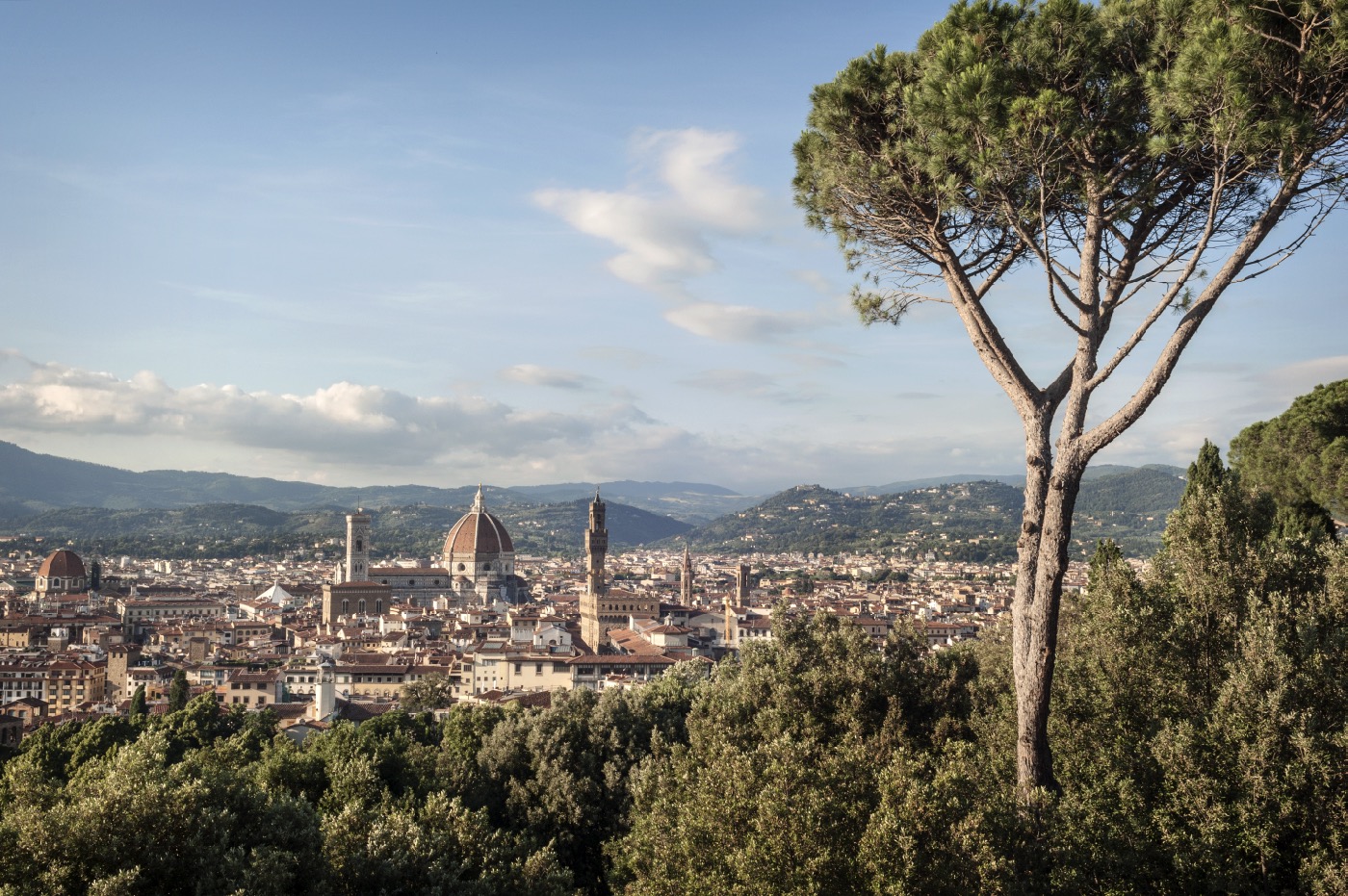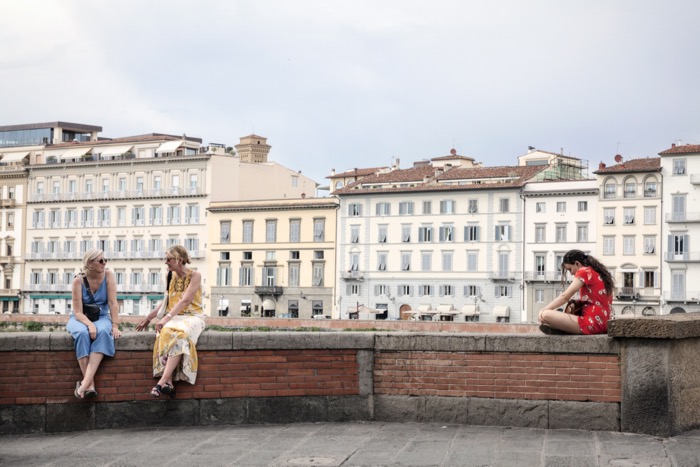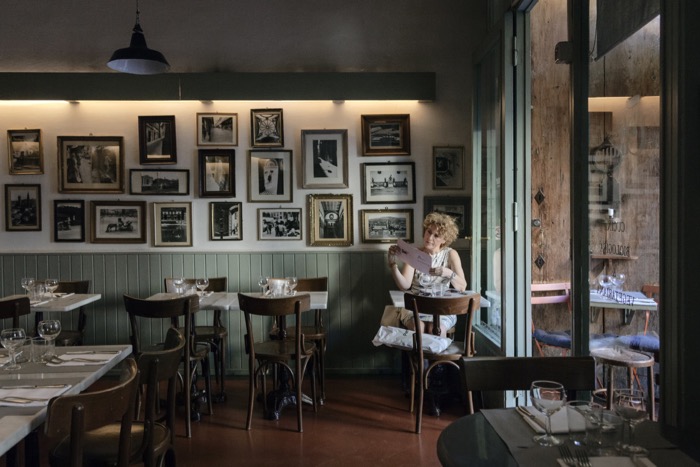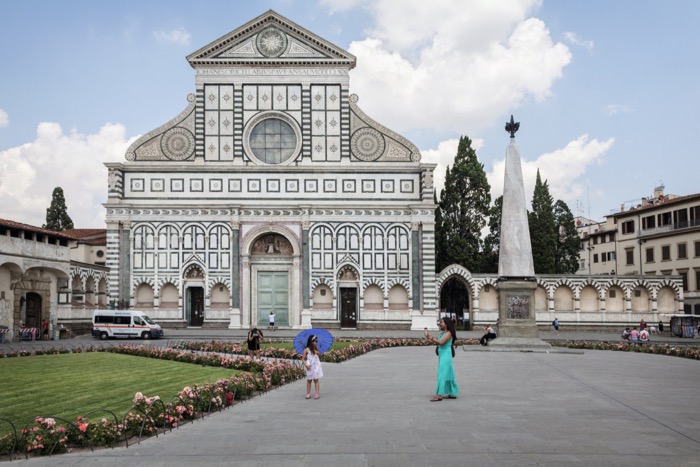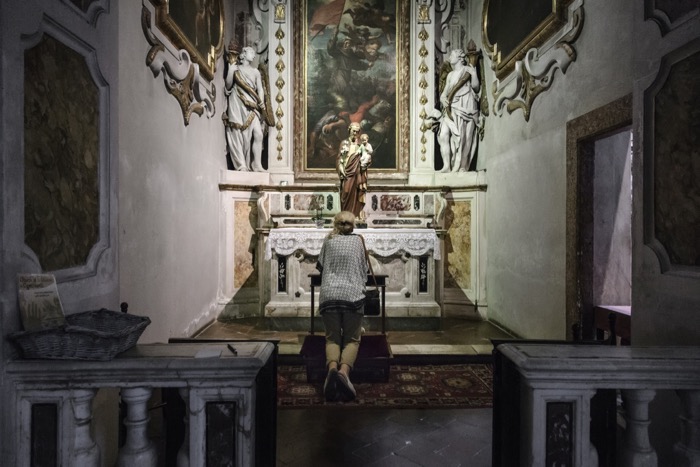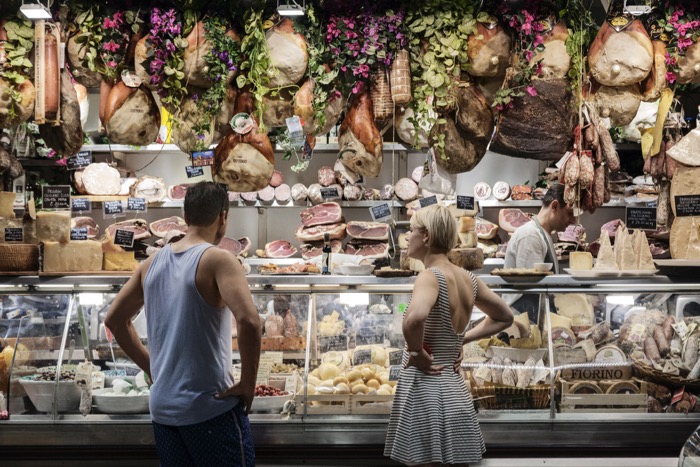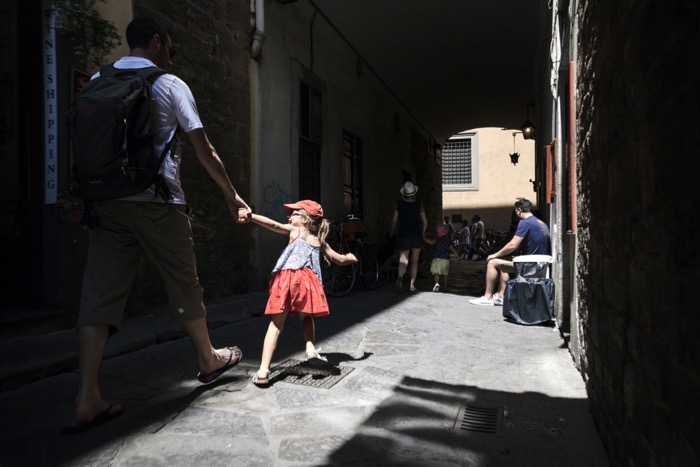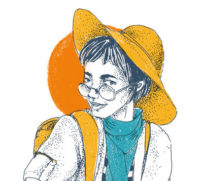Full of energy, take Via di Belvedere towards Porta San Giorgio gate. On the right, admire the dragon fresco and the longest stretch of medieval walls in Florence. On the left, enjoy the imposing and severe Forte Belvedere, venue for shows and exhibitions. From here, go down to Piazza di Santa Felicita, a small treasure trove overlooking the church of the same name, to reach Oltrarno. At Palazzo Pitti, Joanna of Austria would pass through the Vasari corridor built by her father-in-law Cosimo I so that she wouldn’t have to walk along the road, to reach the private chapel enclosed above the church’s central nave. This is a pleasure-loving neighbourhood: you can choose between a nice focaccia with chickpea flour (don’t miss the one at 5eCinque) and steak Florentine, at least 8 cm thick and cooked rare, at I 4Leoni.
Borgo San Jacopo, Via Maggio and Via dei Serragli are the streets of craftsmen and antique dealers. To get to the first of these from Piazza della Passera, I love crossing Via Toscanella to say hello to the Madonna del Puzzo (Madonna of the Stink), an original terracotta masterpiece made by Mario Mariotti. The Madonna is covering her nose and looking up to the sky. Mariotti lived in the neighbourhood and he thought this would be a good way to show his disgust at the bad smells in the area. As I was saying, you can find all sorts of craftsmen in Florence. Two such examples are Lapo and Michiko; he’s a sixth-generation book-binding master and she’s been in Florence for 15 years as a paper restorer. Lifelong friends and companions, Lapo is the self-taught son of art, while Michiko has studied in Paris (she has hung both the French national flag and the Italian flag outside the atelier): “We want to aim high, creating unique pieces, a far cry from mass production”. Lapo and Michiko’s paper could also work as a base for Marilena and Rino’s artistic photography. Their laboratory, Fotomorgana, is located between Giardino di Boboli and Torrigani gardens, at 104 Via dei Serragli, in the artistic heart of Florentine craftsmanship. Probably the only printers from black and white negatives in the whole of Tuscany, they’ve been on the market for so many years that all the professionals go to them. In the laboratory, the magic of the darkroom can be seen in each creation: unique prints, handcrafted passe-partouts, touch-ups and colours are just some of the infinite possibilities conceived by the art of Marilena and Rino.


